
| Starting price | $99/ month |
|---|---|
| Free trial | Yes, 14-day |
| Free version | No |
Unleash the potential of SEO software to increase your website’s visibility, boost organic traffic and improve search engine rankings. Find the perfect SEO solution that fits your needs and helps you stay ahead of the competition.
Are you ready to take your SEO game to the next level? Explore our carefully compiled list of the best SEO software solutions that offer exceptional value. Read on to find the perfect SEO software for your business.

| Starting price | $99/ month |
|---|---|
| Free trial | Yes, 14-day |
| Free version | No |
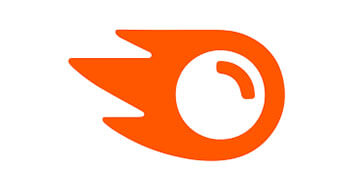
| Starting price | $119.95/mo |
|---|---|
| Pricing model | Per User |
| Free Trial | 7-day |
| Free Version | Yes (limited functionality) |

| Starting price | $99/mo |
|---|---|
| Pricing model | Subscription-based |
| Free trial | 7 day, money back guarantee |
| Free version | Yes |

| Starting price | $18.6/mo |
|---|---|
| Pricing model | Per User |
| Free Trial | 14-day |
| Free Version | Yes |

| Starting price | $5.99/mo |
|---|---|
| Pricing model | Per License |
| Free Trial | 30-day |
| Free Version | Yes |

| Starting price | $69/mo |
|---|---|
| Pricing model | Per User |
| Free Trial | No |
| Free Version | Yes |
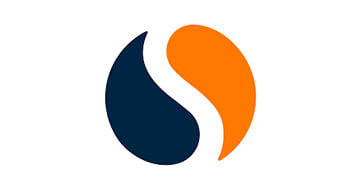
| Starting price | $199/mo |
|---|---|
| Pricing model | Quotation based |
| Free Trial | Yes, 7 days |
| Free Version | Yes |

| Starting price | $59/mo |
|---|---|
| Pricing model | Per Seat |
| Free Trial | No |
| Free Version | No |

| Starting price | $19/mo |
|---|---|
| Pricing model | Subscription-based |
| Free Trial | No |
| Free Version | Yes |
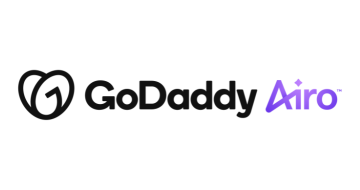
| Starting Price | $11.99/mo |
|---|---|
| Pricing Model | Per user bundled |
| Free Trial | No |
| Free Version | No |

| Starting Price | $7,200/year |
|---|---|
| Pricing Model | Subscriber based |
| Free Trial | No |
| Free Version | Yes |

| Starting price | $99/mo + 500 set up fee |
|---|---|
| Pricing model | Per User |
| Free Trial | 7-day Trial for $7 |
| Free Version | No |

| Starting price | $39/mo |
|---|---|
| Pricing model | Subscription-based |
| Free Trial | No |
| Free Version | Yes |
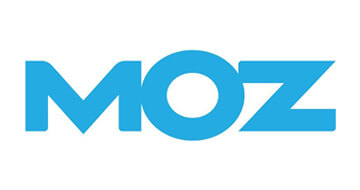
| Starting price | $99/mo |
|---|---|
| Pricing model | Per Seat |
| Free Trial | 30-day |
| Free Version | No |
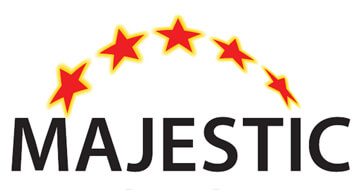
| Starting price | $49.99/mo |
|---|---|
| Pricing model | Per User |
| Free Trial | No |
| Free Version | No |
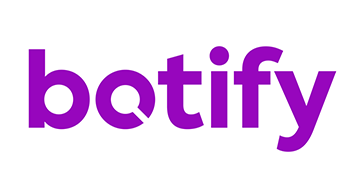
| Starting price | Contact for price |
|---|---|
| Pricing model | Subscriber based |
| Free Trial | Yes |
| Free Version | No |
An SEO tool is a marketing software designed to help enterprises improve their ranking on Google and other search engines, by improving the search relevance of their sites. These software tools help with the identification and analysis of keywords. They can also perform SEO audits and keyword research.
SEO software programs can help identify areas that need improvement on your website, so they can produce higher rankings on search engine results pages (SERPs). It is the best way to bring free or organic traffic to your website.
They aren’t only useful for conducting keyword research or tracking your rankings. They can help you gain insights into your competition and how your efforts are paying off. SEO tools can even show whether you are generating a strong return on investment (ROI).
An SEO platform is an online tool that helps users organize, analyze and monitor their website data relating to its performance on search engines. This data includes keyword rankings, trends to backlinks, website speed, and more.
SEO optimization tools can help many businesses in a variety of sectors receive higher ROI. The best SEO tools will help your business with:
We take our ranking process seriously. We have developed a detailed evaluation methodology to evaluate SEO software providers. Our methodology evaluates pricing, ease of use, features, and support to ensure we identify the best options for our users. Additionally, we leverage our internal testing team and analyze existing external reviews to calculate an individual score for each software – the Genius Score. Check out our rating methodology page for more insights into our rating process.
SEO tools have many functionalities and the best SEO software programs offer different features, but there are some important ones that are a must. Always check for the following characteristics when trying an SEO platform tool.
SEO management tools can help you achieve better results and improve your digital presence. SEO optimization tools are capable of delivering lots of metrics that can help you analyze your content’s performance, your competition’s performance, discover new keywords, and many other use cases.
The best SEO tools show you how to optimize your site with keywords and formatting recommendations. Many programs also track rank changes. This allows users to change any content that has begun to perform poorly.
Some of these tools also provide automated reporting in real-time. You won’t need to assemble the data points manually because the SEO optimization tools will provide customizable reporting capabilities for different objectives that will make the reporting faster and easier.
SEO optimization tools not only help you analyze your site but also your competitors’ website pages. SEO management programs offer link data for competitors showing you what your competitors are doing, how much traffic they are getting, and how they rank in Google. The best SEO software programs out there will give you an overview of a domain’s performance. You will be able to see their position on the first page of search results and many more details.
Through SEO optimization tools, you can identify new opportunities to optimize your webpages. The best SEO software programs help with researching keywords that are related to your products or services through their keyword planner tools.
Some of the best free SEO software offers internal and external link opportunities. This means that they identify and prioritize internal or external link opportunities. SEO optimization tools also manage all aspects of the link acquisition process.
The best SEO software programs offer a comprehensive dashboard that will help you monitor search engine trends and rankings and analyze how you rank against your competitors. Also, it will help you assess your overall site authority.
If you improve the visibility of your website via search engines you will ultimately attract more visitors. SEO management tools can help with choosing the right keywords that will generate the most traffic. This will help you create good content from scratch, as well as reworking middling content into great content, and generating a good quantity of quality backlinks.
The best free SEO software can also maximize your business presence across multiple channels, including directory listings and mobile. When you have analyzed the reported results, you then can implement the strategies that will improve your search rankings. This will be achieved by optimizing your website, using social media marketing, and driving strong backlinks.
The best SEO programs don’t only deliver a significant impact within the first month of implementing them. Sometimes the effects compound over time, which increases results for a long period — we’re talking years. The more budget, time, and effort you commit to implementing SEO strategies, the higher will be the ROI. The results will never be instant but investing in it is still worthwhile.
Implementing thoughtful strategies like on-page optimization and careful content creation takes time. You should view the purchasing of one of the best SEO software programs as an investment with a long-term return and not as an expense. In this way, you will see the best results.
Search engine optimization is working even if you aren’t. Content doesn’t disappear like paid advertising when the budget runs out. High rankings promote your website 24/7. Of course, these high rankings happen if you use one of the best free SEO software programs on our list. It allows your company to reach everyone that is searching for you.
If you rank high on the first page of Google, this will make you more credible in the eyes of potential clients. Websites are ranked on dozens of on-page and off-page metrics. These include content, mobile usability, and website speed.
Of course, no one thinks about such things when they are searching, but they have trust in Google’s ability to deliver valuable and relevant content. Keep in mind that 75% of users do not move on to the second page of Google search results.
Search engine optimization doesn’t only help with a single target audience. The best free SEO software programs are equally effective for targeting different audiences too and with the same service. Businesses can reach every audience via intent-driven keywords when using the best SEO software programs. To help reach different audiences, a company can create separate service pages and target different keyword phrases.
A critical component of the best free SEO software programs is the user experience. It is also a significant Google ranking factor. Search Engine Journal says that Google can interpret an unfavorable or favorable user experience. A positive one can become a pivotal element for the success of a website.
Anyone that is searching for something on Google expects to have their questions answered in moments. Clicking onto a website that has a barrage of popups or mobile incompatibility will result in the visitor leaving the site within seconds to find another one with a better user experience. High bounce rates show that the page is not valuable for the user, which will lower your rankings.
According to statistics, 14.6% of closing rates are achieved from SEO leads. Meanwhile, 1.7% of them are from outbound leads. When you reach out to customers, the conversion rates are lower because the interaction is unasked for.
SEO leads are customers that have done some online research with specific requirements and then came to your website from a search engine results page. This is what makes them marketing-qualified leads or MQL. Only sales-qualified leads or SQLs can result in higher conversion rates.
Brand awareness is hugely important for a company. It is the extent to which the targeted market recognizes the brand. It shows how familiar your customers are with your service or product, and it is one of the key steps in promoting your company.
SEO ensures that your product or service is found easily. When you are at the top ranking, people will be able to see you effortlessly. This means that your link will be picked more often and more users will visit your site. This is one of the top benefits of SEO: establishing your brand’s awareness. It also helps with the promotion of word-of-mouth marketing and builds up your business.
The best free SEO software programs can be used by anyone, but not all individuals in a business organization need to use it. The responsibility of implementing it usually falls on content marketers or other people within the marketing department of the company. Sometimes there are even SEO specialists who do that. There are also plenty of self-employed content creators that rely on SEO to ensure that their content ranks at the top of the search engine results page.
Large companies are the ones that use SEO the most. Search engines are a primary channel where potential buyers can find services and products. Many businesses invest a huge amount of their marketing budget on the SEO specialist team that tries hard to make the company’s content rank higher on SERPs.
Small businesses include content creators with a personal brand. They can be bloggers, YouTubers, influencers, etc. This is a highly competitive space, so they want to ensure that their content is performing well on their platform. SEO programs can help with tools like brand mentions and hashtag tracking.
The pricing models include per month pricing, per-user pricing, and volume-based pricing. But most SEO programs are priced on a per monthly basis. They can be divided into three tiers.
Some SEO platforms are pricier because they offer more or better tools or offer all-in-one tools. Cheaper tools are mostly used for in-house SEO or small agencies. Meanwhile, the most expensive tools are used by larger agencies or companies.